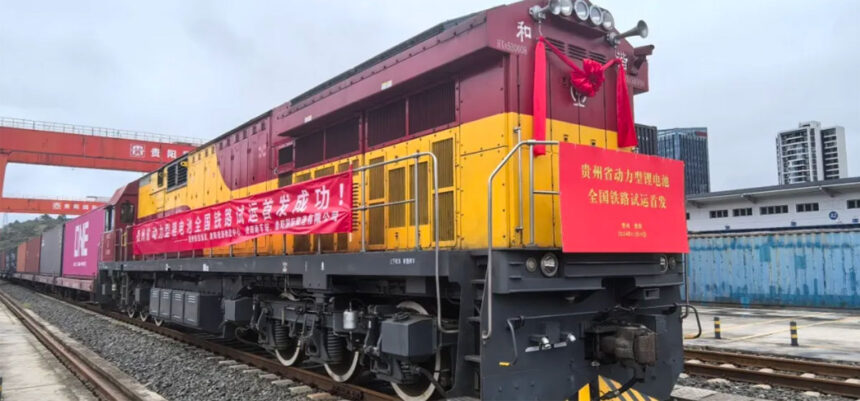China has recently launched a pilot program aimed at transporting power batteries by rail, a move that is expected to reduce costs and improve efficiency in the transportation of these crucial components. Currently, 90 percent of China’s power batteries are transported by road, but the shift to rail transportation is seen as a more cost-effective and efficient alternative.
Two of the world’s largest power battery makers, CATL and BYD, are among the first participants in this pilot program. CATL’s routes in the pilot include transportation from Guiyang, Guizhou, to Shanghai and Yibin, Sichuan, to Shanghai, while BYD’s route is from Chongqing to Beibu Gulf, Guangxi. These companies hold significant market share in the power battery industry, with CATL accounting for 36.7 percent and BYD for 16.4 percent in the January-September period, according to data from SNE Research.
Rail transportation of power batteries offers several advantages, including high capacity, moderate cost, and minimal weather-related disruptions. This shift from road to rail transportation is expected to reduce emissions, lower costs, and improve overall transportation efficiency. Additionally, connecting China’s power battery transportation with the China-Europe Railway Express could enhance the global competitiveness of China’s lithium battery industry, according to CATL.
BYD’s battery division, FinDreams Battery, highlighted the importance of accumulating experience in transporting lithium batteries by rail. While road transportation has been the primary method for transporting power batteries in China, accounting for over 90 percent of total transportation, it has limitations in terms of carrying weight and suitability for long-distance transportation. Rail transportation, on the other hand, offers a more cost-effective and efficient solution for transporting power batteries.
The pilot program for rail transportation of power batteries in China is a significant step towards improving the logistics and sustainability of the lithium battery industry. CATL and BYD have been actively preparing for this transition, conducting tests and forming specialized project teams to address the challenges associated with rail transportation of lithium-ion power batteries.
Overall, the shift to rail transportation for power batteries in China is expected to have a positive impact on the industry, reducing costs, improving efficiency, and enhancing global competitiveness. With the pilot program now underway, it is likely that more companies will follow suit, further driving the adoption of rail transportation for power batteries in the future.






